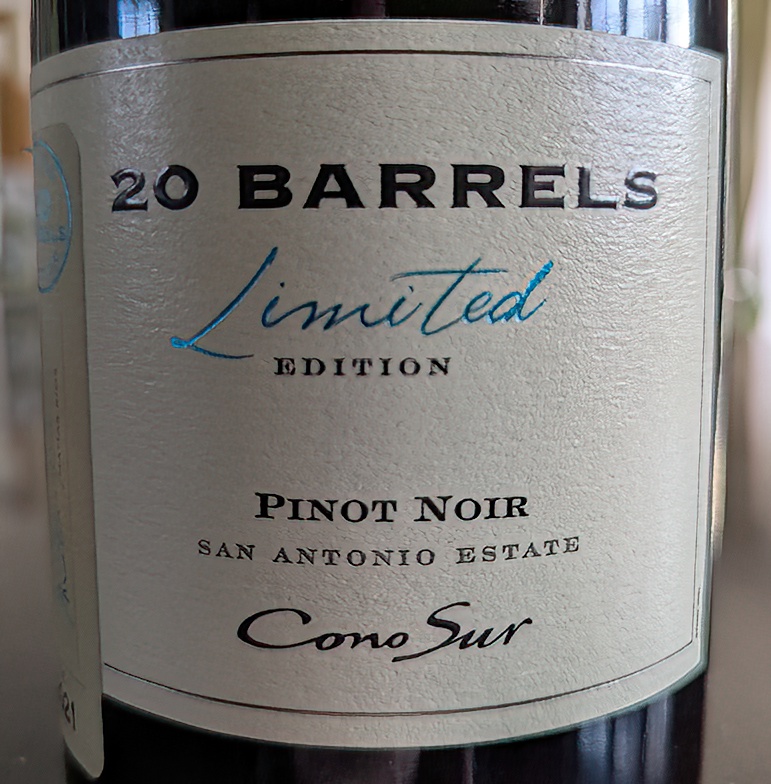
Coming from the coastal San Antonio region in Chile, Cono Sur 20 Barrels Pinot Noir is made using traditional Burgundy vinification methods. This wine is aged in a mix of foudres and partially new oak barrels, adding depth and complexity to its character.
This 2021 vintage has earned considerable acclaim, receiving 93 points from Tim Atkin, a Silver Medal at the International Wine Challenge (IWC) and 92 points from the International Wine & Spirit Competition (IWSC).
Notably, it is now part of Tesco’s new premium wine selection, previously accessible only through independent wine merchants. My first encounter with it was at a Tesco Press Tasting, where it left a lasting impression.
With a delicate, light colour, the wine’s initially reserved aroma develops beautifully after just 20 minutes at which point it reveals an inviting and intense aroma of raspberry. The taste offers a medley of plum and black cherry with a subtle layer of leather from the oak ageing, creating a sophisticated profile. Despite its 14% ABV, the wine feels surprisingly light in body, with gentle tannins and an intriguing savoury mushroom finish and a memorable earthy aftertaste. When enjoyed over several days, this wine develops increasingly deeper savoury aromas and flavours that eventually become stronger than the fruit. I also paired it with food, and it held its own beautifully alongside similarly savoury dishes.
The wine is in a bottle with the deepest punt I have ever seen, coupled with an excessively heavy design. These outdated features are unnecessary and should be reconsidered by Cono Sur in favour of a more sustainable approach. The quality of the wine, particularly this one, speaks for itself and does not need to rely on such an heavy presentation.
Available at Tesco for a regular price of £18, I was fortunate to buy for an amazing £13.50 during a 25% off promotion. Already a favourite from the earlier press tasting, it has quickly become one of my top Picks.














